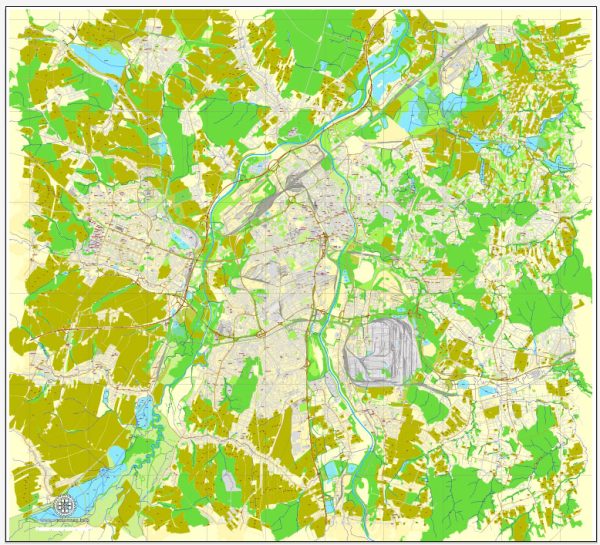Ostrava, located in the northeastern part of the Czech Republic, has a rich history of urban development that spans centuries. The city’s growth and transformation have been influenced by various historical, economic, and cultural factors.
- Medieval Origins (13th-14th centuries): Ostrava’s history dates back to the 13th century when it was founded as a market settlement. The town’s development was closely tied to the discovery of extensive coal deposits in the region, which played a crucial role in shaping its future.
- Habsburg Era (16th-18th centuries): In the 16th century, Ostrava came under Habsburg rule, and the city continued to grow as mining activities expanded. The Habsburg monarchy played a significant role in the economic development of the region. The city’s strategic location near the borders of Moravia, Silesia, and Poland contributed to its importance as a trading and industrial center.
- Industrial Revolution (19th century): The 19th century marked a period of rapid industrialization for Ostrava. The growth of coal mining and iron and steel industries transformed the city into a major industrial hub. The establishment of numerous factories and the influx of workers led to the expansion of the urban area. This period also saw the construction of industrial infrastructure, including mines, smelters, and railways.
- First Republic (1918-1938): After World War I and the establishment of Czechoslovakia, Ostrava continued to play a key role in the country’s industrial landscape. The city became an important center for coal and steel production, contributing significantly to the national economy.
- World War II and Communist Era (1938-1989): Ostrava, like many European cities, experienced the impact of World War II. After the war, the city became part of the Eastern Bloc and fell under communist rule. The economy remained focused on heavy industry, with an emphasis on coal mining and metallurgy. This period saw further urbanization and the construction of housing estates to accommodate the growing population.
- Post-Communist Period (1989 onwards): With the fall of communism in 1989, Ostrava, like other cities in the region, underwent significant changes. The transition to a market economy led to the restructuring of industries, and some traditional heavy industries declined. Efforts were made to diversify the economy and attract new investments.
- Modern Development (21st century): Ostrava has been working to rebrand itself as a modern, dynamic city with a focus on technology, services, and culture. Investments in infrastructure, the development of business parks, and efforts to enhance the quality of life for residents have been part of the city’s strategy. Ostrava has also become known for hosting cultural events and festivals, contributing to its cultural renaissance.
Throughout its history, Ostrava’s urban development has been closely tied to industrial activities, with periods of growth, decline, and transformation. Today, the city reflects a blend of its industrial heritage and a commitment to fostering a diverse and sustainable future.


 Author: Kirill Shrayber, Ph.D.
Author: Kirill Shrayber, Ph.D.